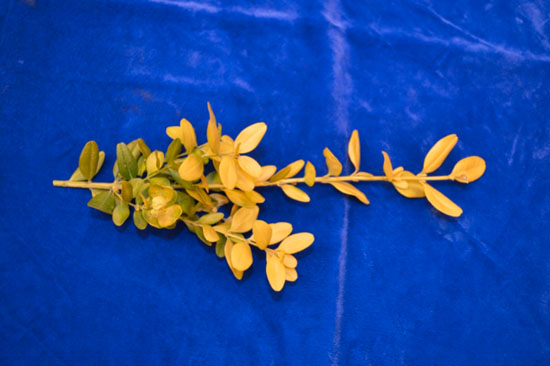Issue 1, April 28, 2014
Boxwood Winter Injury
Boxwood plants are susceptible to winter injury in central and northern Illinois when warm winter days are followed by freezing temperatures. The warm days deceive the plant into breaking dormancy and taking up water. Then when the sun goes down, the temperature drops, and that causes the water in the leaf tissue to freeze. The expanding ice within the plant splits and kills cells. Affected branches can split from inside pressure as well.
Dry winds will also pull moisture out of evergreen leaves, resulting in freeze-dried burn symptoms. Depending on a plants' susceptibility, location, and the weather conditions, winter injury can damage the entire plant or just the branch or leaf tips causing leaves to become pale yellow/reddish bronze. Most boxwood species are hardy in zones 5-6, but some cultivars have been selected to tolerate the colder temperatures of zone 4.

Boxwood branch tip damage, winter injury from cold or wind.

Winter injury to boxwood. Bark splitting from freeze damage.
To repair a winter damaged boxwood plant, it will need to be pruned. If only the tips of the plant are affected, simply remove the dead ones with a hand shears and the plant should recover quickly. If the plant is severely affected with splitting bark and dead branches, it will have to be pruned all the way back to where the splitting or dead areas stop. It may take several years for the plant to recover. It is very important to prune the dead tissue in early spring since it is an easy target for fungal invaders such as Volutella spp., and always be sure to sanitize pruning equipment between cuts to avoid spreading infection. (Suzanne Bissonnette and Nicholas Prudhomme)